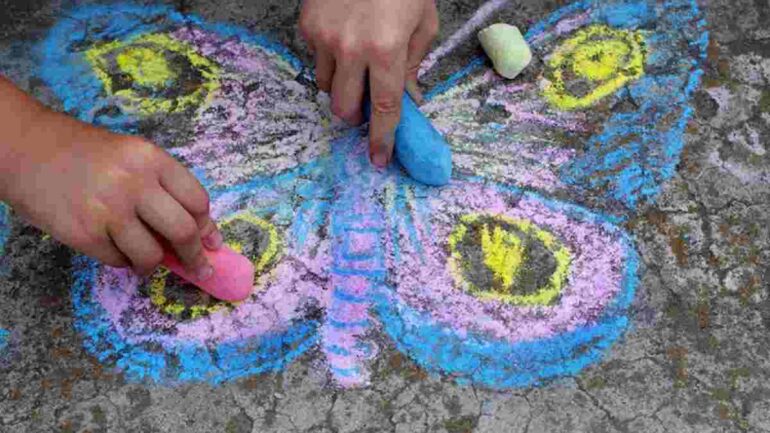ART & DESIGN
Artist draws a butterfly using blue, purple, and yellow. Using colorful chalks and creativity are the best ways to improve your chalkboard art
There’s always room for improvement. Whether you want to brush up on your skills or learn new techniques, here are ways to improve your chalkboard art.
BY ALEX TOWNASTALLI
Everywhere you turn, it seems that chalk art is present. Chalk has come a long way from the traditional classroom setting. You can see chalk art in cafes, restaurants, art shows, sidewalks, and at weddings! Whether you’re picking up chalk art as a hobby or you’re a professional artist looking for new tricks, here are the best ways to improve chalkboard art.
Use Wet Chalk
If you’re drawing with traditional chalk sticks, you can get the best results by using wet chalk. To get a detailed and brighter effect, you should dip your chalk in water before drawing on your board. At first, you will think your artwork is faded, but as it dries, the colors will become brighter.
However, to bypass wetting chalk sticks, you can use chalk markers for a lasting effect. Many people who become professional chalk artists invest in many chalk supplies, including chalk markers because they’re bright and water resistant.
Sketch Your Designs First
Making a mistake while creating your designs can be an inconvenience. However, you can avoid mistakes by doing multiple drafts and planning your art. Sketching your designs before applying them on your final surface will prevent ghosting and help you determine placement. To help improve your chalkboard art, we recommend having a sketchbook or journal where you can plan your designs.
Keep Your Designs Simple
It’s a universal art rule to focus on your main focal point before adding small details. It would help if you kept your designs simple before tackling more complex designs that require large amounts of detail. Over time, you will develop a technique, and you will be able to create chalk art pieces with exceptional detail. Practice makes perfect! Take your time and have fun.
Mix Your Fonts and Styles
A great way to catch someone’s eye is by mixing styles and fonts. If you’re decorating a chalkboard easel for your business, this is a great way to attract customers. However, you never use more than three different fonts to prevent your piece from being too busy. As you practice, you can add techniques and imagery to your chalkboards.
